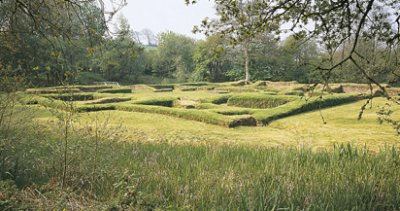
One mile north-west of Week St. Mary
Tel: (0117) 9750700
Email: southwest@english-heritage.org.uk
Web: www.english-heritage.org.uk/visit/places/penhallam-manor
Ancient Manor
These low, grass-covered ruins are the remains of a moated 13th century manor house built by Andrew de Cardinham. Moated manor houses are found mainly in central and eastern England, but are rare in the south-west. Penhallam is therefore particularly unusual. Also having been abandoned in the 14th century, its full medieval ground plan has survived unaltered by later building work.
Although Penhallam seems to have been built in various stages between the late 12th and early 14th centuries, Andrew de Cardinham is assumed to have been responsible for the main building phase, in the 1220's and 1230's.
Originally the manor was reached by a drawbridge over the moat which was operated from a separate gatehouse at the edge of the island. The drawbridge was lowered onto a timber bridge with stone abutments on the opposite side of the moat. Subsequently, around the later 13th Century a fixed stone bridge was substituted that ran to the gatehouse entrance from where a walled passage led to an inner gateway in the south range.
Penhallam seems to have been lived in for a relatively short time. Andrew de Cardinham died in about 1256 without a male heir, and his lands were split equally between his daughters. By 1270 Penhallam had descended through the female line to the Champernowne family, and by the early 14th century it had been passed to tenants. Partitioning of the manor's lands had begun by 1330 and was complete by 1428. Local people would then have helped themselves to the building materials, quickly reducing the deserted shell to its foundations.
Near the village of Week St. Mary just east of the A39 Atlantic Highway.
Opening TimesAll Year Admission Free |
Penfound Manor Poundstock Gildhouse Widemouth Bay
Ancient Sites in Cornwall Bude English Heritage in Cornwall